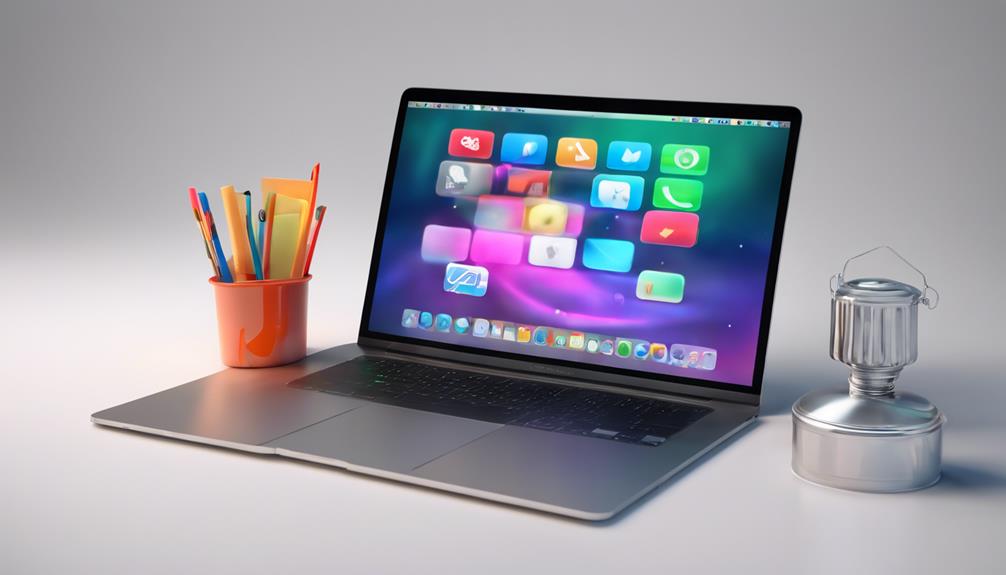Uninstalling apps on your MacBook is easy and helps improve performance and free up storage. You can use Launchpad by holding an app icon until it jiggles, then clicking the 'X' to delete. Alternatively, open the Applications folder in Finder, drag the app to the Trash, and empty the Trash to remove it completely. You can also opt for third-party uninstallers for a more thorough cleanup. Don't forget to check for leftover files in your Library folder. Stick around, and you'll discover effective tips and tools to keep your Mac organized and running smoothly.
Key Takeaways
- Use Launchpad to uninstall apps by holding the app icon until it jiggles and shows an 'X' for deletion.
- Access the Applications folder via Finder, then drag the app to Trash to uninstall it.
- Utilize third-party uninstallers to remove apps and their associated files efficiently.
- Check the Library folder for leftover files after uninstallation to free up additional space.
Understanding App Management
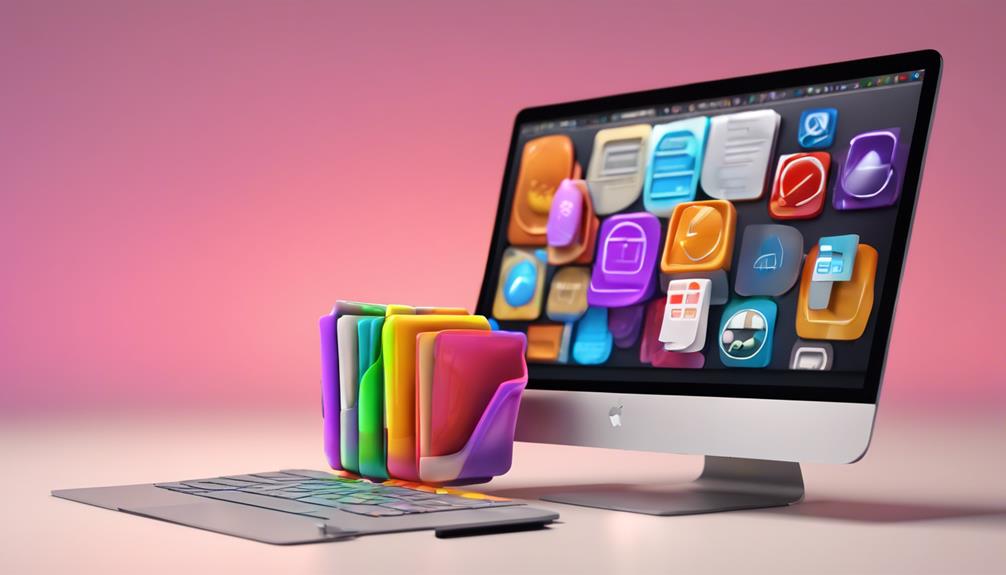
Managing apps on your MacBook is vital for keeping your device running smoothly and efficiently. By practicing good app organization, you not only enhance your productivity but also guarantee that your MacBook performs at its best. Start by categorizing your apps into folders based on their function—like productivity, entertainment, or utilities. This way, you'll easily find what you need without wasting time searching.
Regular software maintenance is equally important. Make it a habit to check for updates for your apps; these updates often include critical performance improvements and security patches. When you keep your software up-to-date, you're contributing to the overall health of your device.
Additionally, consider the apps you use daily and those that just take up space. Deleting apps you no longer need can free up storage and improve your MacBook's performance.
Uninstalling via Launchpad
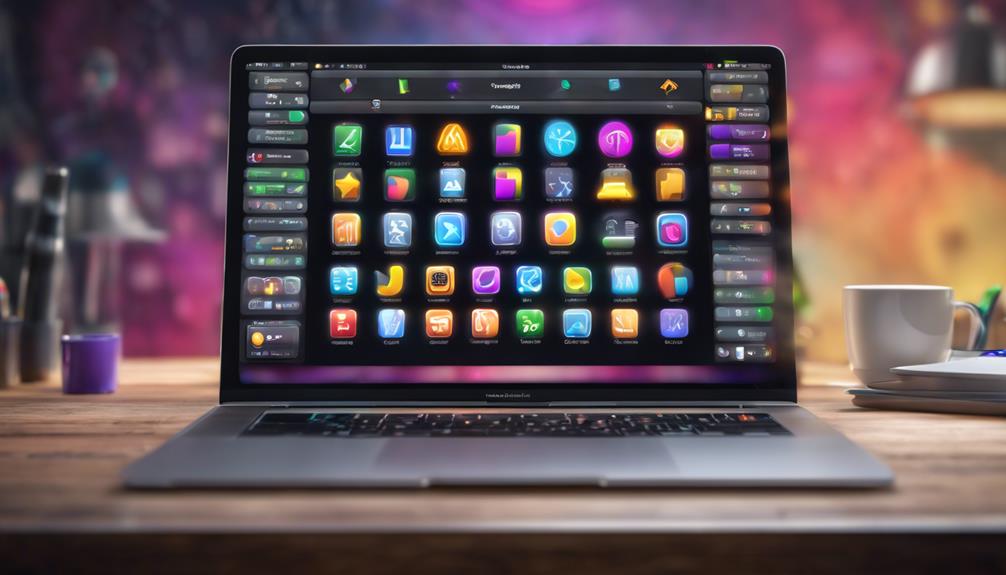
Ever wondered how to quickly uninstall apps on your MacBook? Using Launchpad is a simple and efficient way to tidy up your app organization. Here's how to do it in just a few steps:
- Open Launchpad: Click on the Launchpad icon in your Dock or pinch your trackpad with your thumb and three fingers.
- Find the App: Use Launchpad navigation to search for the app you want to uninstall. You can swipe left or right to browse through pages.
- Start the Uninstallation: Click and hold the app icon until it starts to jiggle. You'll see an 'X' appear on the corner of the app icon.
- Confirm the Deletion: Click the 'X' and verify that you want to delete the app. It'll be uninstalled from your MacBook in a flash!
That's it! With these easy steps, you can keep your MacBook clutter-free and guarantee your app organization stays on point.
Now, you can enjoy a streamlined experience tailored to your needs!
Using the Applications Folder
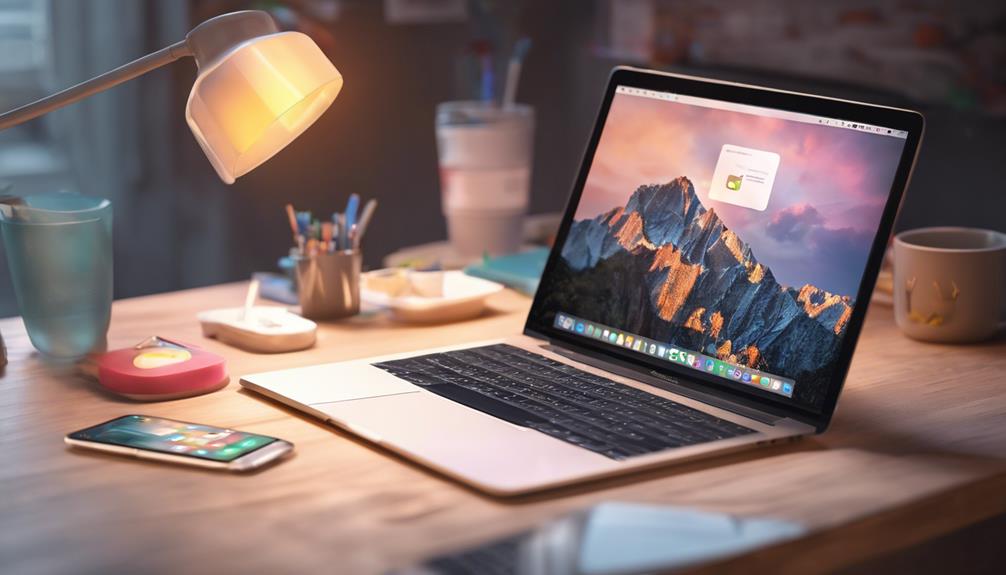
Using the Applications folder is another straightforward way to uninstall apps on your MacBook. This method helps you keep your folder organization tidy while managing the app icons you use daily.
Here's how to do it:
| Step | Action |
|---|---|
| 1. Open Applications | Click on the Finder icon in your dock. |
| 2. Locate the App | Scroll through the list of app icons. |
| 3. Drag to Trash | Click and drag the app icon to the Trash. |
| 4. Empty Trash | Right-click on the Trash and select "Empty Trash." |
Removing Apps With Finder
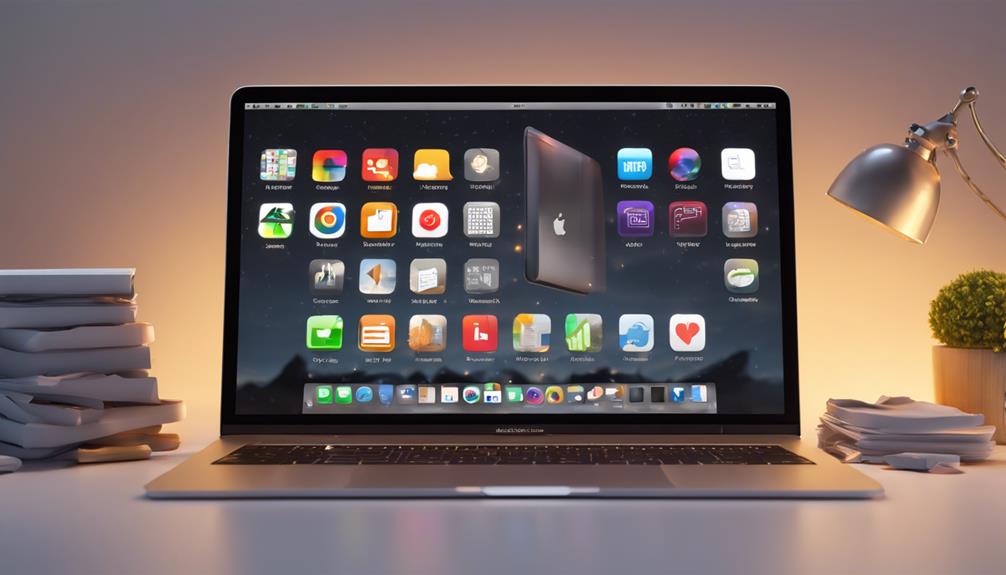
To remove apps with Finder, simply open the Finder window and navigate to your Applications folder. This method is straightforward and guarantees you're in control of what's on your MacBook. Here's how to do it:
- Select the app: Find the application you want to uninstall. Make sure to check its app compatibility to avoid removing something essential.
- Drag it to Trash: Click and hold the app icon, then drag it to the Trash in your Dock. You can also right-click and select 'Move to Trash.'
- Empty the Trash: After you've moved the app, right-click the Trash and choose “Empty Trash.” This step permanently removes the app and clears up space on your device.
- Check for software updates: After uninstalling, it's wise to check for software updates. Sometimes, new updates can provide better compatibility with existing apps.
Utilizing Third-Party Uninstallers

Third-party uninstallers can simplify the process of removing apps, making certain all associated files get deleted along with the application itself. If you're tired of leftover files cluttering your Mac, these tools are definitely worth considering. Many popular app alternatives come packed with uninstaller features that make cleaning up a breeze.
When you choose a third-party uninstaller, you're not just uninstalling an app; you're also scanning for hidden files, caches, and preferences that typically get left behind. This thorough approach helps you reclaim valuable disk space and keeps your Mac running smoothly. Plus, several uninstallers offer user-friendly interfaces that make the whole process intuitive, so you won't feel lost or overwhelmed.
Before you jump in, it's crucial to research and select a reputable uninstaller. Look for reviews and recommendations from fellow Mac users to make certain you're choosing a tool that's trusted by the community.
With the right third-party uninstaller, you'll not only streamline your app management but also create a cleaner, more efficient workspace on your Mac. Say goodbye to unwanted apps and hello to a more organized digital life!
Deleting System Apps
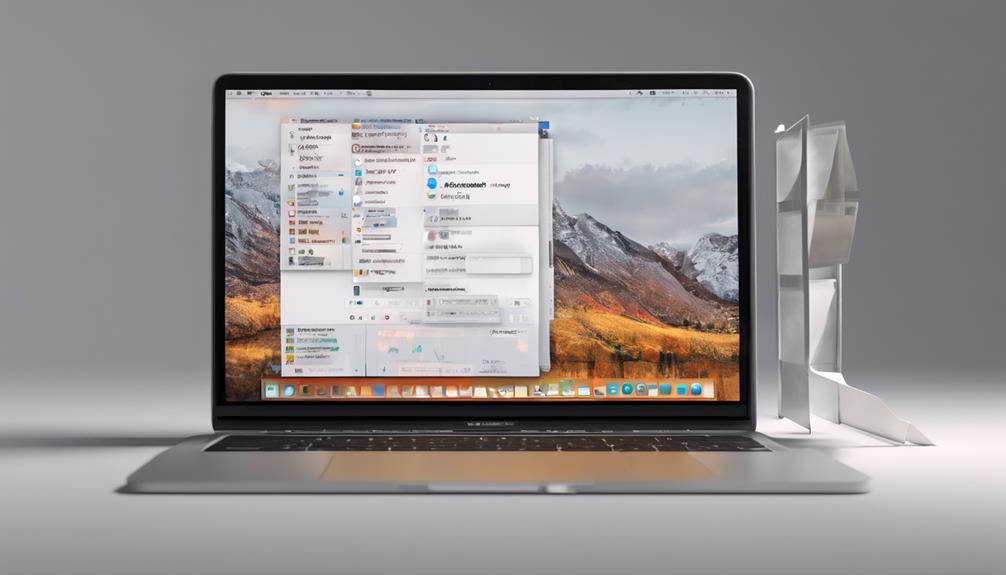
Deleting system apps on your Mac can be tricky, as these applications are often integral to the operating system's functionality. Before you proceed, it's crucial to understand the system app limitations and the consequences of deletion.
Removing these apps might lead to unexpected performance issues or instability, so think twice before taking action. If you're still determined to delete a system app, here are some steps to contemplate:
- Identify the app: Make sure you know which app you want to delete and why. Some might be essential for your Mac's performance.
- Backup your data: Always create a backup using Time Machine or another method. You don't want to lose important files if something goes wrong.
- Use Terminal: For advanced users, using Terminal can help you delete system apps. Just be cautious with the commands you enter.
- Research alternatives: Reflect on whether third-party apps can fill the role of the system app you're thinking of deleting.
Clearing Leftover Files
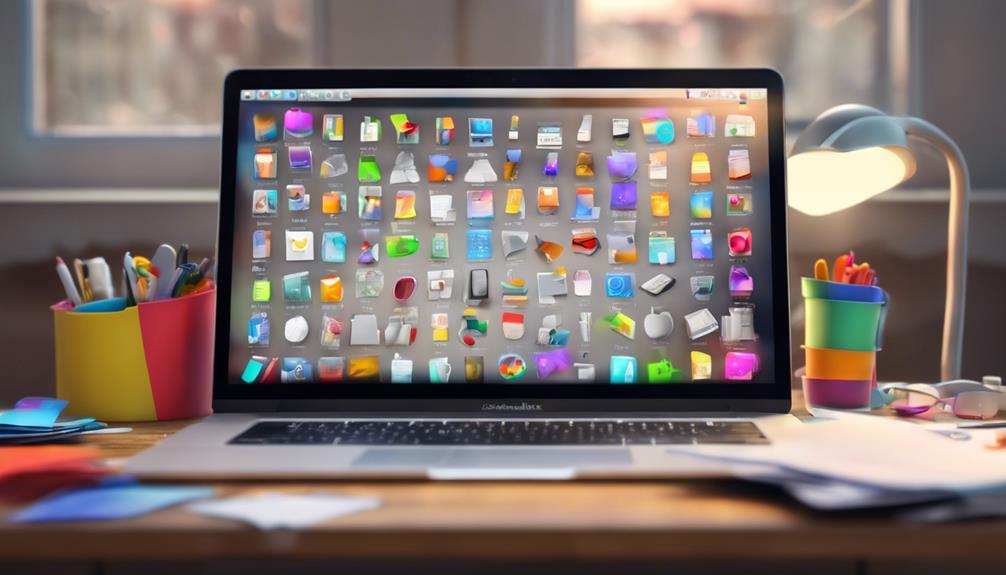
Clearing leftover files after uninstalling apps guarantees your Mac stays clutter-free and performs at its best. When you delete an app, it often leaves behind various files, such as preferences, caches, and logs. To keep your system organized, you need effective file management techniques.
Start by checking the Library folder. Open Finder, click 'Go' in the menu bar, then hold down the Option key to reveal the Library option. Inside, look for folders like 'Application Support,' 'Caches,' and 'Preferences.' Search for any files related to the app you uninstalled and delete them.
Next, consider using cleaning techniques like third-party applications specifically designed for this purpose. Tools like AppCleaner or CleanMyMac can help you find and eradicate those stubborn leftover files swiftly. Just be sure to read user reviews and choose a reputable program.
Managing Built-in Apps

When it comes to managing built-in apps on your MacBook, knowing which ones you can disable or remove can streamline your workflow and enhance performance. While you can't remove some core apps due to built-in limitations, there are ways to manage defaults and customize your experience. Here's how to get started:
- Disable Unused Apps: Go to System Preferences > Users & Groups > Login Items. Remove any apps you don't need at startup.
- Hide Apps from the Dock: Right-click on the app in your Dock, choose Options, and select 'Remove from Dock' to declutter your workspace.
- Use the App Store: Check for updates or alternatives for built-in apps that might better suit your needs.
- Organize with Folders: Create folders in Launchpad to group similar apps together, making them easier to find and manage.
Tips for Efficient Uninstallation

Managing built-in apps sets the stage for efficiently uninstalling those third-party applications cluttering your MacBook. To streamline your app cleanup, consider these maintenance strategies that not only enhance performance but also create a sense of belonging in your digital space.
| Tip | Description |
|---|---|
| Organize Your Apps | Group similar apps into folders for easier access. |
| Use a Dedicated Uninstaller | Employ uninstaller tools for complete removal of unwanted apps. |
| Regular Cleanups | Schedule routine checks to delete apps you no longer use. |
| Review App Permissions | Verify each app aligns with your current needs and security. |
Conclusion
In the journey of maintaining your MacBook, think of uninstalling apps as pruning a garden.
Just like removing dead branches helps your plants thrive, getting rid of unused apps makes your device more efficient.
By following the steps we've explored, you can cultivate a clean, clutter-free workspace where your favorite tools can flourish.
So grab your digital shears and keep your MacBook blooming beautifully—your productivity will thank you!
